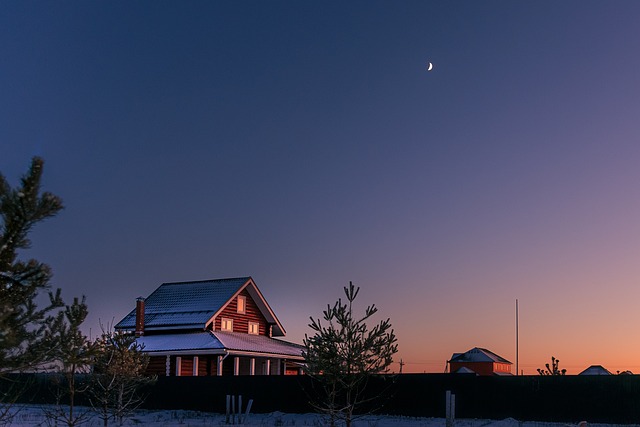Winterizing your home involves proactive steps to protect outdoor spaces, ensuring vibrant yards and gardens throughout colder months. This includes securing loose fixtures, insulating sensitive plants, regularly cleaning debris, and planting cold-resistant evergreens for year-round color. Strategically planning for seasonal changes, understanding plant needs, and employing techniques like mulching and indoor storage maintains garden health and aesthetic appeal during winter. Protect outdoor furniture by thoroughly cleaning, applying wood conditioner, using waterproof covers, and storing delicate items indoors or in sheltered areas to prevent damage from harsh weather conditions.
Maintaining a beautiful and functional outdoor space requires year-round care, especially when protecting it from harsh seasonal changes. This comprehensive guide equips homeowners with the knowledge to navigate each season, ensuring their outdoor areas thrive despite the cold or heat. From preparing for winter by identifying vulnerable plants and protecting furniture to spring refresh techniques for optimal soil health and vibrant displays, these strategies ensure your outdoor space remains a sanctuary all year round, even while winterizing your home.
Preparation for Winter: Protecting Your Outdoor Space
Winter can pose unique challenges for maintaining outdoor spaces, but with proper preparation, you can ensure your yard and garden remain vibrant and protected throughout the colder months. One of the key aspects of winterizing your home outdoors is addressing structural integrity. This involves taking steps to secure loose fixtures, such as outdoor furniture and decor, to prevent damage from harsh weather conditions. Additionally, insulating sensitive plants and shrubs is essential to protect them from freezing temperatures. A simple yet effective method is using protective coverings like burlap or special plant blankets, which create a barrier against the cold, ensuring your greenery thrives when spring arrives.
Regular cleaning and maintenance are also vital. Removing leaves, branches, and other debris not only improves aesthetics but also prevents potential damage to lawnmowers and gardening tools during winter’s colder months. Additionally, planning for seasonal plants can enhance your outdoor space’s year-round appeal. By incorporating evergreens and cold-resistant flowers, you can maintain color and interest even when other plants are dormant. This thoughtful approach to winterizing your home outdoors ensures a beautiful and functional garden come springtime.
– Identifying vulnerable areas and plants
When preparing your outdoor spaces for the colder months, identifying vulnerable areas and plants is a crucial first step in what’s often referred to as winterizing your home. Delving into this process involves understanding which parts of your garden are most at risk from extreme weather conditions. For instance, consider locations where water tends to pool, as these spots can damage plant roots and even structural elements like patios or walls over time. Additionally, take note of areas with minimal insulation, such as exposed gardens or south-facing walls without protection, which can be susceptible to freezing temperatures and strong winds.
Knowing your vulnerable plants is equally important. Certain species may require specific care during winter, including moving them indoors or providing additional protection. Plants that are naturally dormant during colder seasons usually need less attention, but evergreens and those with tender leaves should be given extra consideration. Understanding these needs will help ensure your outdoor spaces remain vibrant and healthy, even as the climate changes, ultimately contributing to a more sustainable and enjoyable environment throughout the year.
– Seasonal plant care and storage
Maintaining a lush and inviting outdoor space requires year-round care, even during the colder months. One crucial aspect is understanding how to prepare and protect your plants for seasonal changes, especially when winterizing your home. As temperatures drop, it’s essential to consider the specific needs of each plant to ensure their survival.
For many regions, this involves a strategic approach to storage. Some plants may need to be brought indoors to avoid frost damage, while others can benefit from a layer of mulch to protect their roots. It’s also critical to know when to trim and prune, as these practices not only enhance the appearance of your garden but also promote healthy growth in the coming spring. Proper preparation ensures that your outdoor space remains vibrant and visually appealing throughout all seasons, providing both aesthetic value and a connection to nature even during the winter months.
– Winterizing outdoor furniture and decor
As the seasons change, so does the need to care for and protect your outdoor spaces. Winterizing your home extends to maintaining and storing outdoor furniture and decor to ensure they withstand the colder months. Start by cleaning all items thoroughly; this removes dirt and debris that could lead to rust or damage during storage. For wooden pieces, use a wood conditioner to protect against moisture and extreme temperatures.
Wrapping and covering furniture is crucial for winterizing your home outdoors. Use waterproof covers designed for outdoor furniture to guard against snow, ice, and rain. Secure them tightly to prevent debris from entering and causing damage. Store delicate items like statues or decorative vases in a sheltered area or inside your home to avoid potential breakage due to extreme weather conditions.
Maintaining an attractive and functional outdoor space year-round is achievable with proper preparation. By identifying vulnerable plants, practicing seasonal care, and winterizing furniture and decor, you can ensure your outdoor area remains a relaxing retreat even during the coldest months. Remember, a well-cared-for outdoor space offers not just aesthetic benefits but also provides a sense of calm and connection to nature, making it an essential part of your home’s overall comfort and value. So, whether it’s a cozy winter garden or a vibrant spring landscape, maintaining your outdoor spaces is a year-round endeavor that pays off in spades.
